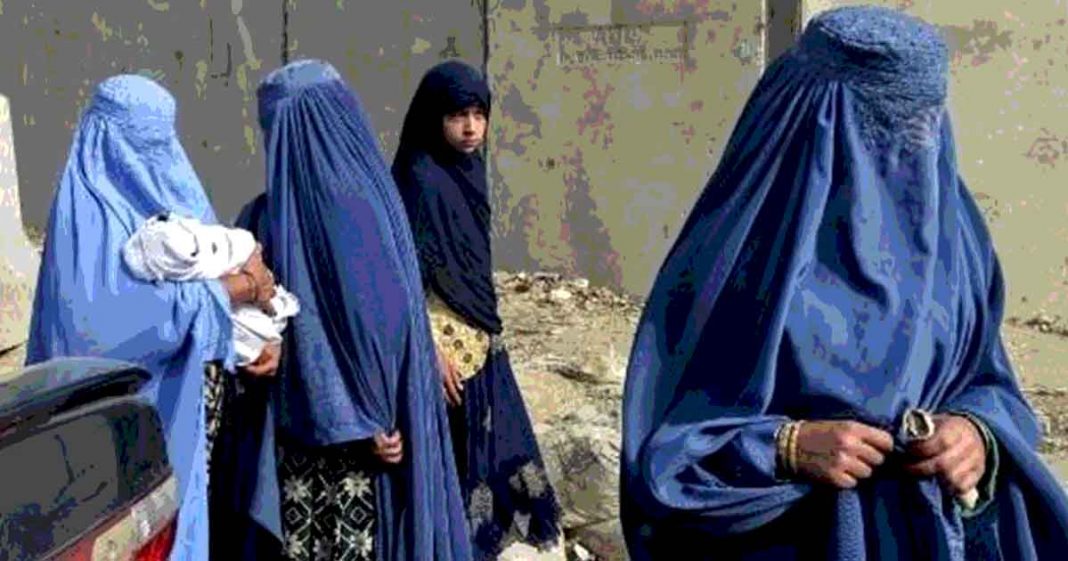There is no question on the disproportionate plight Afghan Women have faced due to the consequences of never-ending war based on greed, deferring ideologies and egotistical men. Modernists have used Afghan Women as examples of the changing nature of governance in Afghanistan, through advocation of education, increased participation in daily affairs of the country and most importantly in their veiling and unveiling.
These progressives have been confined to the likes of Kabul and Mazer-i-Sharif with very little influence in the regional heartlands, where most of the populace resides in. But like a pendulum, the Conservative legions in the country react and repulse such ideologues, as they perceive it to be a threat to the Afghan way of life only to reverse the changes and usher even stricter rules on women.
Read more: Afghan women activists plead for basic rights in their homeland
What actually happened?
When George W. Bush announced in his infamous War on Terror speech on the 20th of September 2001, it was a natural reaction to the physical assault on America. From here, developments like the State Department’s report titled: “The Taliban’s War Against Women” led to the passing of the “Afghan Women and Children Relief Act of 2001,” suddenly the horizons for the war expanded.
First Lady Laura Bush in her radio address on the same day as this report, brought moral justifications for the war, by spinning the attacks into a fight for the women of Afghanistan and not just retribution for the attacks on the Twin Towers. She stated “ The plight of women and children in Afghanistan is a matter of deliberate human cruelty, carried out by those who seek to intimidate and control. The fight against terrorism is also a fight for the rights and dignity of women”. The statements which emerged from the Capitol, framed Afghan Women as voiceless prisoners who needed saving which only the West could do. Blue Burqa clad women were flashed throughout the media landscape, ultimately becoming a symbol of oppression by the Taliban.
Even Rep. Carolyn Maloney wore a burqa on the House floor in 2001 to further weaponize the angle of saving Afghan women, which in hindsight was a sheer misappropriation of Afghan culture. The irony in all of this, is women wore the Burqa during the Soviet occupation period as well when the U.S was funding the Mujahideen to fight them; but conveniently that part of history was quietly omitted.
Life of women under Taliban’s rule
Figures attributed to the plight of Women are often (mis)quoted to propagate a rosy picture of pre-Taliban life. Figures such as 15 percent of national parliamentary seats were allocated to women in the 1970s or 50 percent of government jobs were held by Women. There are two elements inherently wrong with these statements: A) the Taliban didn’t exist until 1995 and B) Afghanistan was ruled under a Marxist leader in the form of Daoud Khan, who was far from anything Democratic.
Read more: PM Khan thinks Afghan women are very strong
The statement by the upper echelons of the U.S. Government completely washed their hands of all responsibility when they provided more military aid than humanitarian aid in the 1980s; by arming the Mujahideen to the teeth. Congress had provided nearly $3 billion in covert aid for the Mujahideen in the 1980s and by 1987, the “freedom fighters” as labeled by Ronald Reagan, were receiving $700 million in annual military assistance.
Fast forward to the end of 2001, the U.S Airforce was mercilessly bombing from above and the Northern Alliance made in-roads into Kabul, taking over the Capital as a counterweight to the oppressive regime of the Taliban. Cherry-picking the good guys (Northern Alliance) over the bad guys (Taliban) has been a policy practiced for years by the U.S; despite both sides identifying initially as Mujahideen (Freedom Fighters). A Human Rights Watch report in 2002 detailed how under the presence of 4500 ISAF personnel, members of the Northern Alliance were indifferent to their treatment of women in Afghanistan.
In one instance in a report by Human Rights Watch, a car with NGO workers consisting of a male and two females were stopped due to the female passengers not wearing the traditional Chadari and having their faces uncovered. The male colleague tried to clarify their professional relations with the women but he was rebuked by one of the Northern Alliance militiamen stating “ It doesn’t matter that the Taliban are no longer here, because the Mujahideen are here”.
Justifications for American presence were often reliant on the perceived “progress” for Afghan women. In reality, when the U.S invaded Afghanistan, the country had endured two decades of conflict with both genders, male and female greatly affected. If one is starting from a baseline of zero, then any incremental developments or even symbolic gestures will always be considered an improvement. Whether that warrants an accolade is another argument but if the United States spent $3.9 Billion on humanitarian assistance and in the same period spent $2.26 Trillion on funding the war effort, where does this show its priorities?
Milking the tears of Afghan Women to expand the boundaries for the justifications of War was an undeniable smokescreen especially when 90% of the population still lives on less than $2 a day, with women making up a lion-share of the statistic.
Read more: Afghan women outraged by new Taliban restrictions on work
The writer is a Defence and Political Analyst with a Masters in International Relations from Deakin University, Australia. He specializes in Asia-Pacific Regional Dynamics and Conflict & Security studies. Sameed Basha can be contacted at basha@deakin.edu.au.
The views expressed in the article are the author’s own and do not necessarily reflect the editorial policy of Global Village Space.














